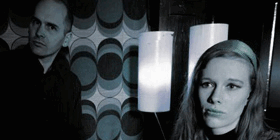
Krautrock: A Brief History
Krautrock: A Brief History
Krautrock is a genre of experimental rock that originated in West Germany in the late 1960s and early 1970s. The sound is characterized by its use of electronic instruments, extended improvisation, and experimental song structures.
Krautrock was pioneered by a group of bands, including Can, Neu!, and Faust. These bands were inspired by a variety of sources, including psychedelic rock, electronic music, and avant-garde classical music.
Krautrock quickly gained popularity in West Germany and other European countries. The genre helped to define the sound of experimental rock in the 1970s and 1980s, and it continues to be a major influence on experimental music today.
The Elements of Krautrock
Krautrock is characterized by a number of elements, including:
Use of electronic instruments: Krautrock bands often used electronic instruments, such as synthesizers, sequencers, and drum machines. These instruments were used to create a variety of sounds, from lush and atmospheric to harsh and aggressive.
Extended improvisation: Krautrock bands often improvised their music, which allowed them to create a sense of freedom and spontaneity.
Experimental song structures: Krautrock songs often had experimental song structures, which could be challenging and unpredictable.
The Artists of Krautrock
Krautrock was recorded by a wide range of bands, including:
Can
Neu!
Faust
Ash Ra Tempel
Cluster
Harmonia
Tangerine Dream
Klaus Schulze
Eloy
The Legacy of Krautrock
Krautrock is a significant and influential genre of experimental rock. The genre helped to define the sound of experimental rock in the 1970s and 1980s, and it continues to be a major influence on experimental music today.
Krautrock has been sampled and referenced by a wide range of artists, including David Bowie, Brian Eno, and Sonic Youth. The genre has also been featured in a number of films and television shows, such as "Lost Highway" and "Drive."
Conclusion
Krautrock is a genre of experimental rock that is characterized by its use of electronic instruments, extended improvisation, and experimental song structures. The genre was pioneered by a group of bands in West Germany in the late 1960s and early 1970s. Krautrock quickly gained popularity in West Germany and other European countries, and it continues to be a major influence on experimental music today.
Some notable songs of Krautrock include:
"Hallogallo" by Neu! (1971)
"Autobahn" by Kraftwerk (1974)
"Tangerine Dream" by Tangerine Dream (1970)
"Equinox" by Franke-N-Fletcher (1975)
"Schwarzheit" by Ash Ra Tempel (1971)
"Cluster II" by Cluster (1971)
"Harmonia 70" by Harmonia (1971)
"Mother Sky" by Can (1971)
Discussion of the term "Krautrock"
The term "Krautrock" was coined by the British music press in the early 1970s. The term is a derogatory term for Germans, and it was used to dismiss the music of these bands. However, the bands themselves embraced the term, and it has since become a widely accepted term for this genre of music.
There is some debate about whether the term "Krautrock" is accurate. Some people argue that the term is too narrow, as it only includes bands from West Germany. Others argue that the term is too broad, as it includes bands that have little in common with each other.
Despite these debates, the term "Krautrock" remains a useful way to describe this genre of music. The term captures the experimental and innovative nature of this music, and it helps to distinguish it from other genres of rock music.
Posted by November 16th, 2023
Comment
